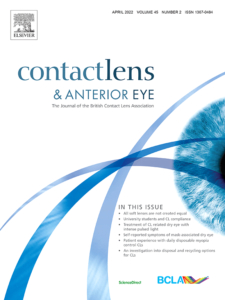The frequency of occurrence of certain corneal conditions by age and sex in Iranian adults
Authors
Affiliations
1Noor Ophthalmology Research Center, Noor Eye Hospital, Tehran, Iran.
2Shahroud University of Medical Sciences, Shahroud, Iran.
3Department of Community Medicine, School of Medicine, Tehran University of Medical Sciences, Tehran, Iran.
4Department of Optometry, School of Paramedical Sciences, Mashhad University of Medical Sciences, Mashhad, Iran.
5Department of Epidemiology and Biostatistics, School of Public Health, Tehran University of Medical Sciences, Tehran, Iran. Electronic address: afotouhi@tums.ac.ir.
Abstract
Purpose: To determine the prevalence of posterior embryotoxon, corneal opacity, pigment on endothelium, corneal dystrophy, and corneal vascularization in a middle-aged Iranian population, and their association with age and sex.
Methods: In a cross-sectional study with multistage cluster sampling, subjects were chosen from 40 to 64-year-old residents of Shahroud in northern Iran. Participants had ophthalmic examinations before and after pupil dilation. Corneal abnormalities were diagnosed by an ophthalmologist using a slit lamp.
Results: Of the 6311 invitees, 5190 people (82.2%) participated; 58.6% (n=3040) were female. The prevalence of posterior embryotoxon, corneal opacity, and pigment on endothelium were 14.7% (95% CI: 13.4-16.0), 4.1% (95% CI: 3.4-4.7) and 1.2% (95% CI: 0.9-1.5), respectively, and corneal dystrophy and corneal vascularization were seen in 0.3% (95% CI: 0.2-0.5) and 3.7% (95% CI: 3.0-4.3), respectively. Unlike posterior embryotoxon, the prevalence of all studied abnormalities increased with age after adjusting for sex. The prevalence of posterior embryotoxon (p=0.023) and corneal dystrophy (p=0.038) was significantly higher in women, and the prevalence of corneal opacity (p<0.001) was significantly higher in men. After adjusting for age, sex, and cataract, cases with corneal opacity and corneal vascularization demonstrated significantly worse uncorrected and corrected visual acuity (p<0.001). Conclusion: This report is the first to explore the prevalence of a variety of corneal conditions in a Middle-Eastern population. The findings indicate that one out of five people may have some sort of corneal conditions, and some can impact corrected visual acuity.
Keywords: Corneal dystrophy; Corneal opacity; Corneal vascularization; Cross-sectional study; Pigment on endothelium; Posterior embryotoxon.

